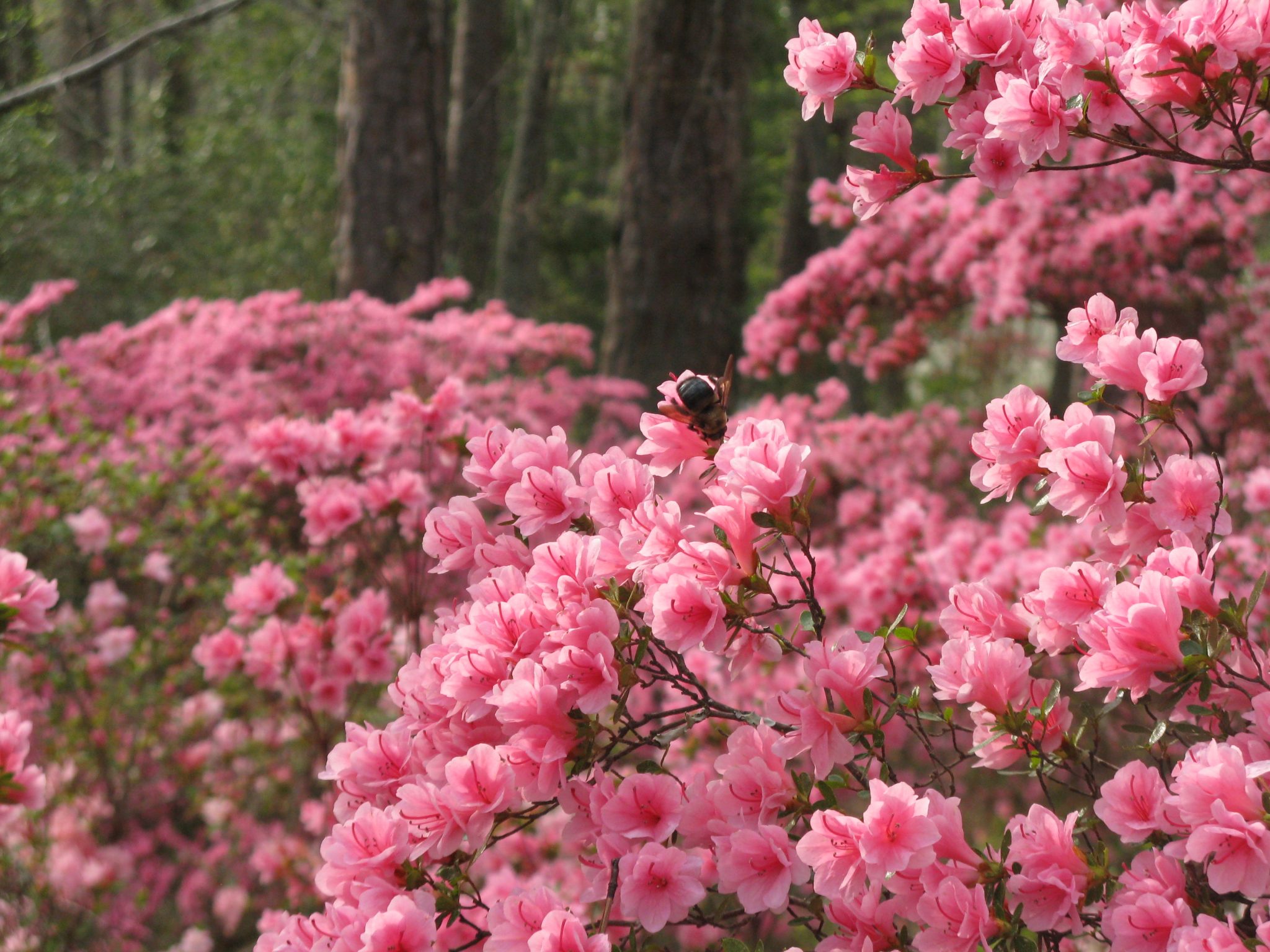Lawn & Garden

Learn—month by month—the necessary gardening activities for lawns and shrubs, annuals and perennials, fruit and nut trees, and bulbs, roots, and tubers. Included is a timeline for activities such as soil testing, planting, pruning, fertilizing, pruning, mulching, indoor plantings—from cauliflower to okra, from camellias to dahlias to heirloom roses.
Fruits and Nuts
- Continue strawberry and grape plantings.
- Bud apples and peaches.
- Start planting blackberries. If weather conditions prevent prompt planting, heel the plants in by placing the root system in a trench and covering the soil.
Shrubs
- Fertilize shrubs (except azaleas and camellias) according to a soil test.
- Late plantings may be made, particularly if they are container grown.
- Monitor shrubs for harmful insects.
Lawns
- Plant bermudagrass, zoysiagrass, and centipedegrass in south Alabama.
- Soil test and add limestone as recommended.
- Fertilize fescue lawns at 1 pound slow-release nitrogen per 1,000 square feet.
- South: If daytime temps are consistently above 70 degress F, consider applying fire ant bait. Read label carefully for best control.
Roses
- Watch new growth for aphids.
- Begin a spray or dust program.
- Begin fertilizing.
Annuals and Perennials
- South: Plant half-hardy annuals.
- Check garden centers for bedding plants such as geraniums and petunias.
Bulbs
- Plant gladiolus every 2 or 3 weeks if a long blooming season is desired.
- Plant tuberous begonias in pots. Plant dahlias.
Miscellaneous
- Check and repair sprayers, dusters, and lawn mowers.
- Control lawn weeds with chemicals as needed. If weeds are deemed a serious problem, send a soil sample for testing as weeds can indicate the lawn is unhealthy.
- Delay pruning of fruiting shrubs such as cotoneasters, pyracanthas, and hollies until after flowering.
Vegetable Seeds
- Central and North: Plant all hardy crops recommended for January and February (garden peas, leafy greens, and root crops).
- Central and South: Continue planting carrots, lettuce, and radishes. Plant sweet corn and squash. South Alabama can start planting beans, melons, and southern peas in late March.
Vegetable Transplants
- Central and North: Plant asparagus, onion sets, and lettuce. Plant certified seed potatoes for Irish and red- skinned varieties in early March.
- South: Harden off tomato, pepper, and eggplant transplants. Plant when the soil has warmed above 65 degrees F and the threat of frost is over.
Questions?
Call the Master Gardener Helpline at (877) 252-4769. A Master Gardener Extension volunteer is waiting to answer your call.
See other months from Alabama Gardener’s Calendar at www.aces.edu.
 Kerry Smith, Extension Associate, Horticulture, Frances Sledge, Horticulture Intern Auburn University. Originally prepared by Dave Williams, former Extension Horticulturist, and Ron Shumack, former Extension Horticulturist.
Kerry Smith, Extension Associate, Horticulture, Frances Sledge, Horticulture Intern Auburn University. Originally prepared by Dave Williams, former Extension Horticulturist, and Ron Shumack, former Extension Horticulturist.
Reviewed July 2022, Alabama Gardener’s Calendar – March, ANR-2615

